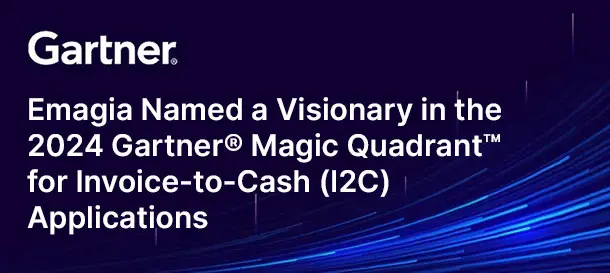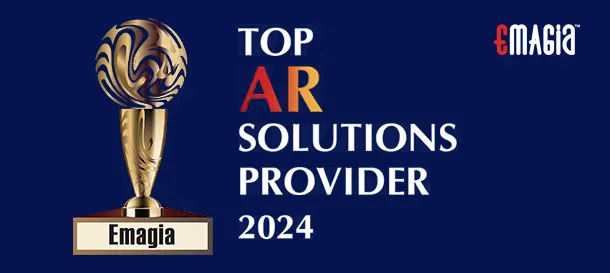Introduction
Managing invoices and payments is one of the most resource-intensive tasks for any organization. As companies grow, they deal with thousands of invoices every month. Ensuring each invoice is properly matched with a corresponding payment becomes a challenge, especially if the process is manual. This is where automated payment matching and invoice matching come into play. The purpose of this article is to explore in depth the top 5 benefits of automated payment–invoice matching for businesses, beginning with its ability to drive efficiency and save time.
Businesses across industries—from manufacturing and retail to finance and healthcare—are shifting towards automation in accounts payable (AP) and accounts receivable (AR). By using digital solutions for invoice processing and payment reconciliation, companies not only improve accuracy but also gain financial visibility, cost savings, and stronger relationships with suppliers and vendors. This first part of the series will explain what automated payment–invoice matching is, why it is important, and dive into the first benefit: efficiency and time savings.
What Is Automated Payment–Invoice Matching?
Definition
Automated payment–invoice matching refers to the use of technology to compare invoices, purchase orders, and payments automatically. Instead of relying on employees to manually verify each line item, automation software cross-checks the data according to pre-defined rules. The system instantly highlights matches, detects mismatches, and flags exceptions for further review. This is a critical step in accounts payable automation and accounts receivable automation.
Why Businesses Struggle With Manual Matching
Manual invoice matching is not only time-consuming but also highly prone to human error. When staff must go through spreadsheets or paper invoices, mistakes are inevitable. Errors can lead to duplicate payments, missed discounts, and supplier disputes. Furthermore, the longer it takes to match invoices and payments, the more delayed financial reporting becomes, affecting decision-making.
Core Components
- Invoice Processing: Automated capture of invoice data from paper, PDF, or digital formats.
- Payment Reconciliation: Matching payments with invoices and purchase orders to confirm accuracy.
- Data Validation: Rules that ensure data accuracy, flag errors, and prevent fraud.
- Integration: Connectivity with enterprise resource planning (ERP) systems for real-time updates.
Example of Use
Consider a global retailer processing 50,000 invoices a month. Without automation, employees may take several days to validate and approve them. With automated payment matching, invoices are digitized, cross-checked in seconds, and either approved or flagged for human review. What once took days can now be completed within hours.
Why Efficiency and Time Savings Matter in Finance
In finance and accounting, time is money. Delays in invoice approvals or payment processing directly affect cash flow management. Late payments damage vendor relationships, while slow approvals prevent businesses from taking advantage of early payment discounts. Companies that automate these processes not only reduce delays but also free employees from repetitive tasks so they can focus on strategy and analysis.
Benefit 1: Efficiency, Speed, and Time Savings
Eliminating Manual Tasks
One of the most obvious advantages of invoice matching automation is the elimination of manual work. Instead of staff members spending hours entering invoice numbers and cross-checking purchase orders, the system handles it instantly. This dramatically reduces processing time and creates streamlined workflows.
Faster Invoice Approval
Invoices that once sat in email inboxes or physical folders waiting for signatures can now be automatically routed for digital approval. Managers receive notifications, review invoices on mobile devices, and approve them in minutes. The combination of automation and mobility accelerates the entire invoice processing cycle.
Digitizing Invoices for Speed
Digitization plays a central role in speed improvements. Automated systems capture invoice data from multiple formats, including scanned paper invoices, PDFs, or electronic files. Optical character recognition (OCR) and machine learning technologies read invoice details with high accuracy. This allows companies to transition from paper-based workflows to fully digital environments.
Streamlined Workflows and Consistency
Automation enforces consistency by applying the same rules every time. Whether an invoice comes from a small local supplier or a global vendor, the process is uniform. This consistency ensures that approvals and payments follow established policies without delays caused by individual discretion.
Real-Life Example of Efficiency Gains
A mid-sized manufacturing company once required five full-time employees to handle payment reconciliation and invoice approvals. After implementing accounts payable automation, only two employees were needed for exception handling. The other three could be reallocated to more strategic tasks like supplier negotiations and financial planning. The result was a 60 percent reduction in processing time and significant labor cost savings.
Improved Cash Flow Through Faster Cycles
When invoices are approved and matched faster, payments are made on time. Timely payments reduce late fees, avoid interest penalties, and open the door for early payment discounts. Improved cash flow management strengthens the company’s overall financial position, enabling better planning and investments.
Impact on Vendor Relationships
Vendors and suppliers value timely payments. Automation ensures that invoices are not lost in the shuffle, reducing disputes and building trust with suppliers. A reputation for prompt payments leads to stronger partnerships and potential preferential treatment in supply chain agreements.
Case Study Insight
One global logistics company implemented automated payment matching and reduced invoice processing time from 10 days to just 2 days. This not only saved administrative hours but also helped them capture over $1 million in early payment discounts annually. Vendors reported improved satisfaction, resulting in smoother contract negotiations.
Scalability of Efficiency Gains
As businesses grow, invoice volumes increase. Manual systems often struggle to keep up, leading to backlogs. Automation, however, scales effortlessly. Whether processing 500 invoices a month or 50,000, the system handles the volume without additional staffing. This scalability makes AP automation a future-proof investment.
Benefit #2: Accuracy and Error Reduction with Automated Payment–Invoice Matching
One of the most powerful advantages of automated payment–invoice matching is the significant improvement in accuracy. Manual processing of invoices and payments often leads to errors such as duplicate payments, incorrect entries, or overlooked invoices. By introducing automated payment matching, businesses minimize these risks while ensuring compliance with financial regulations.
Why Manual Invoice Processing Creates Errors
In traditional workflows, accounts payable (AP) teams manually enter invoice details, cross-check purchase orders, and then process payments. This manual approach is vulnerable to human error, especially when handling thousands of invoices each month. Common errors include mismatched payment amounts, misapplied credits, and accidental double payments.
How Automation Enhances Data Accuracy
Automated payment matching systems leverage advanced algorithms and AI-driven validation to compare invoices, purchase orders, and payment records. Instead of relying on human review, the system automatically detects discrepancies in amounts, vendor details, or payment terms. This ensures that only verified and accurate transactions are approved for processing.
Key Features That Improve Accuracy
- Duplicate Payment Detection: Automated systems flag duplicate invoices before approval.
- Error Prevention Rules: Business rules ensure that invoices are only paid when criteria such as vendor ID, purchase order match, and payment terms are validated.
- Fraud Prevention: Suspicious activities, such as invoice tampering or inflated amounts, are identified quickly.
- Audit Trails: All transactions are logged, ensuring complete transparency for internal and external audits.
Compliance and Fraud Prevention
Businesses face increasing pressure to comply with regulatory frameworks such as SOX, GAAP, and IFRS. Automated payment–invoice matching not only improves accuracy but also enforces compliance by creating detailed records of approvals, rejections, and modifications. This reduces the chances of fraud and makes audit preparation far simpler.
Real-World Example
For example, a multinational retail company implemented automated invoice processing and reduced payment errors by 85%. Before automation, the finance team frequently encountered issues with duplicate invoices. After introducing automated matching, duplicate payments dropped significantly, saving the company millions in unnecessary expenses.
Business Impact of Accuracy
Improved accuracy translates into stronger financial control, better vendor trust, and reduced disputes. When vendors see that payments are processed correctly and on time, relationships strengthen, and negotiations become smoother.
Benefit #3: Cost Savings Through Automated Payment–Invoice Matching
Another critical advantage of automated payment–invoice matching is cost savings. Businesses that rely on manual invoice processing face higher labor costs, late payment fees, and missed opportunities for early payment discounts. Automation streamlines these processes, reducing overall expenses while improving cash flow management.
How Manual Processes Increase Costs
Manual invoice processing involves significant labor hours for data entry, verification, approval routing, and reconciliation. In addition to labor expenses, errors such as late payments often lead to penalties or lost discounts. For organizations processing thousands of invoices monthly, these inefficiencies quickly escalate into millions in wasted costs.
Ways Automation Delivers Cost Savings
- Reduced Labor Costs: Automation eliminates repetitive manual tasks, allowing AP and AR teams to focus on strategic activities.
- Lower Processing Costs: Each invoice costs less to process when handled digitally compared to manual processing.
- Early Payment Discounts: Automated systems accelerate invoice approval, enabling businesses to take advantage of vendor discounts.
- Reduced Errors and Penalties: By minimizing mistakes, businesses avoid late payment fees, disputes, and compliance penalties.
Case Study on Cost Savings
A global manufacturing firm integrated invoice automation into its accounts payable department. The company reduced invoice processing costs by 60%, saving more than $5 million annually. This was achieved by cutting down labor costs, reducing errors, and leveraging early payment discounts offered by suppliers.
Financial ROI of Automation
Automated payment matching not only reduces direct costs but also improves return on investment (ROI). By lowering overhead expenses and increasing efficiency, businesses recover their investment in automation software within months. Over time, these savings compound, making automation a strategic financial decision rather than just an operational upgrade.
Cost Savings Beyond Finance
Beyond direct financial savings, automation also reduces the workload for employees, leading to higher job satisfaction and lower turnover rates. Teams can redirect their efforts toward value-added initiatives such as vendor negotiations, financial planning, and strategic sourcing.
Summary of Accuracy and Cost Benefits
Automated payment–invoice matching empowers businesses by significantly reducing errors and improving accuracy, while simultaneously lowering costs. Together, these benefits ensure stronger financial health, better compliance, and higher overall efficiency.
Benefit #4: Financial Visibility with Automated Payment–Invoice Matching
One of the greatest challenges businesses face is the lack of real-time visibility into their financial operations. Automated payment–invoice matching directly addresses this issue by providing accurate, up-to-date financial insights. Instead of waiting for month-end reconciliations or manual reports, businesses can see payment statuses, cash flow trends, and outstanding invoices instantly.
Why Financial Visibility Matters
Financial visibility is crucial for strategic decision-making. Without clear insights, organizations risk making inaccurate forecasts, underestimating expenses, or overlooking revenue opportunities. Lack of visibility can also cause compliance challenges and increase the risk of fraud or unnoticed financial leaks.
How Automation Provides Real-Time Insights
Automated systems continuously track invoices, payments, and reconciliations. By connecting directly with enterprise resource planning (ERP) software, accounting platforms, and banking systems, these tools provide a unified view of financial operations. This level of visibility helps leadership teams plan budgets, manage working capital, and allocate resources with confidence.
Key Features that Improve Financial Visibility
- Real-Time Dashboards: Interactive dashboards display live data on payment statuses and outstanding invoices.
- Accurate Reporting: Automated reporting ensures management receives precise and timely information without manual effort.
- Cash Flow Management: Businesses can monitor liquidity levels to plan investments and operational expenses more effectively.
- Audit Readiness: Comprehensive logs and transaction histories make audits smoother and more transparent.
Improved Financial Control
With automated invoice processing, organizations can enforce stronger internal controls. Any unusual patterns such as duplicate invoices, irregular payment amounts, or delayed approvals can be flagged in real time. This prevents errors from escalating and ensures financial operations remain under tight control.
Case Example of Financial Visibility
A global logistics company adopted automated payment matching across its operations in 20 countries. By doing so, the company gained a real-time view of over 150,000 invoices monthly. This visibility allowed executives to adjust working capital strategies instantly, resulting in a 25% improvement in cash flow predictability.
Impact on Business Strategy
Better visibility means leaders can identify cost-saving opportunities, optimize supplier negotiations, and forecast growth accurately. It transforms financial data from a static record into a strategic asset for decision-making.
Benefit #5: Stronger Vendor and Supplier Relationships
In addition to internal efficiency, automated payment–invoice matching improves external relationships with vendors and suppliers. Timely, accurate payments build trust and foster stronger partnerships, which are essential for long-term business success.
Why Vendor Relationships Are Crucial
Vendors are not just service providers—they are strategic partners. Poor payment practices can strain these relationships, resulting in delayed shipments, higher costs, or loss of priority service. On the other hand, efficient payment processes can strengthen bonds and open doors for better pricing and terms.
How Automation Strengthens Relationships
By reducing delays and errors, automation ensures vendors receive payments accurately and on time. This creates consistency and reliability that vendors can count on, making them more willing to extend favorable terms, offer early payment discounts, or prioritize your business over competitors.
Specific Ways Automation Improves Vendor Trust
- Timely Payments: Automated approvals speed up processing, ensuring vendors are paid on schedule.
- Reduced Disputes: Accurate matching minimizes disputes over incorrect payments or missing invoices.
- Transparent Communication: Vendors can track payment statuses through digital portals or automated notifications.
- Enhanced Negotiation Power: Reliable payment history strengthens leverage in negotiating long-term contracts.
Case Study of Vendor Relationship Success
A mid-sized technology firm used automated invoice processing to eliminate recurring disputes with its top suppliers. Within six months, vendor satisfaction scores improved by 40%. The company also secured better pricing terms due to the consistent on-time payments enabled by automation.
Customer Satisfaction and Business Growth
Strong supplier relationships translate into business growth. When suppliers trust your processes, they provide better service, timely deliveries, and collaborative partnerships. This, in turn, improves customer satisfaction since products and services are delivered smoothly.
Summary of Financial Visibility and Vendor Relationships
Automated payment–invoice matching not only enhances internal financial visibility but also strengthens external vendor relationships. Businesses gain real-time insights for smarter decision-making, while vendors enjoy reliable and timely payments. Together, these benefits create a foundation for financial stability, operational excellence, and long-term growth.
Challenges and Pitfalls of Automated Payment–Invoice Matching
While automated payment–invoice matching delivers enormous benefits, businesses often face certain challenges during implementation. Recognizing these pitfalls in advance helps organizations prepare better and ensures smoother adoption.
Data Quality Issues
Automation systems rely heavily on accurate data. If invoice details are incomplete, inconsistent, or recorded in different formats across systems, automation may flag frequent mismatches. This can frustrate teams and slow down the process if not addressed properly.
Integration with Existing Systems
Not all companies use the same accounting platforms or ERP systems. Integrating automation tools with legacy software can be complicated and may require customization. Without proper planning, integration issues can delay the rollout and reduce efficiency.
Change Management Resistance
Employees accustomed to manual workflows may initially resist automation. Concerns about job security, lack of training, or misunderstanding of the benefits can hinder adoption. Strong communication and effective training are essential to overcome resistance.
Cost of Implementation
Although automation saves money in the long run, the initial investment can be significant. Some organizations hesitate to move forward due to software costs, integration expenses, or training needs. A clear ROI analysis helps justify the investment.
Complex Scenarios in Invoice Matching
Certain industries deal with complex invoices that include partial payments, multiple line items, or international tax regulations. Automation tools must be sophisticated enough to handle these complexities without frequent manual intervention.
Best Practices for Successful Automation
To maximize the benefits of payment–invoice matching automation, organizations should follow proven best practices. These practices reduce implementation risks and accelerate positive outcomes.
1. Start with Clean Data
Before rolling out automation, ensure that master data such as vendor details, payment terms, and chart of accounts are accurate and standardized. Clean data minimizes errors and improves automation efficiency.
2. Phase the Implementation
Instead of automating everything at once, start with a pilot project or a small department. Gather feedback, make adjustments, and then expand the automation gradually. This reduces disruption and builds user confidence.
3. Provide Training and Support
Comprehensive training programs help employees understand the value of automation and how to use new tools effectively. Continuous support reassures staff and reduces resistance to change.
4. Use Metrics to Measure Success
Track KPIs such as processing time, error rates, payment cycle time, and cost per invoice. These metrics demonstrate the impact of automation and help identify areas for further improvement.
5. Collaborate with Vendors
Engage vendors early in the process by introducing them to the automation system. Provide portals or digital submission methods that align with their needs, ensuring smooth collaboration.
How Emagia Helps Businesses with Automated Payment–Invoice Matching
Emagia is a leading provider of advanced finance automation solutions, and its payment–invoice matching capabilities are designed to address every challenge businesses face. The platform combines artificial intelligence, machine learning, and deep financial expertise to deliver best-in-class results.
End-to-End Automation
Emagia automates the entire workflow, from capturing invoices digitally to matching them with payments and updating records in real time. This ensures accuracy while eliminating manual intervention.
Smart Matching Algorithms
Emagia’s intelligent algorithms go beyond simple data comparison. They handle partial payments, multiple invoices, and complex matching scenarios seamlessly. This reduces the need for exception handling and speeds up the reconciliation process.
Seamless Integration
The platform integrates smoothly with ERP systems, accounting software, and banking networks. This reduces implementation time and ensures that automation fits naturally into existing workflows.
Improved Compliance and Audit Readiness
With detailed transaction histories, automated logs, and advanced reporting, Emagia makes compliance simple. Businesses can prepare for audits quickly and reduce the risk of penalties or fines.
Vendor and Customer Portals
Emagia supports self-service portals for vendors and customers. Vendors can submit invoices, track payment statuses, and reduce disputes. Customers benefit from transparent, accurate billing interactions.
Proven Results Across Industries
From manufacturing giants to mid-sized service firms, Emagia has delivered measurable improvements in payment processing efficiency, error reduction, and cash flow visibility. Its track record demonstrates the tangible value of automation.
Summary of Challenges, Best Practices, and Emagia’s Role
While automation adoption comes with challenges such as data quality, system integration, and change management, these can be overcome with best practices and the right technology partner. Emagia provides robust, intelligent automation tools that streamline payment–invoice matching and help businesses unlock efficiency, accuracy, and stronger financial control.
Frequently Asked Questions on Automated Payment–Invoice Matching
Below are some of the most common questions businesses ask about automated payment–invoice matching, accounts payable automation, and invoice reconciliation. These FAQs provide simple, practical insights for decision-makers exploring automation.
What is automated payment–invoice matching?
Automated payment–invoice matching is the process of using technology to reconcile payments with invoices in real time. Instead of manually verifying amounts and dates, automation compares invoice data with payment records and flags mismatches instantly.
How does automated invoice matching reduce errors?
Automation reduces errors by eliminating manual entry. Intelligent algorithms cross-check amounts, invoice numbers, vendor details, and dates, ensuring accuracy while preventing duplicate or fraudulent payments.
Is automation suitable for small businesses?
Yes, small and mid-sized businesses can also benefit from automation. Cloud-based solutions provide affordable access to advanced payment reconciliation, helping smaller companies save time and manage cash flow more effectively.
Can automated systems handle partial payments?
Yes, modern automation platforms are designed to manage complex scenarios such as partial payments, multiple invoices, or payments across different currencies and tax jurisdictions.
Does automation improve vendor relationships?
Absolutely. Vendors appreciate timely and accurate payments. Automated systems reduce disputes, speed up approvals, and provide vendors with visibility into payment statuses, building stronger trust and collaboration.
How does automation impact financial visibility?
Automated reconciliation provides real-time dashboards and reports. Finance teams gain instant insights into outstanding invoices, cash flow, and payment cycles, which improves forecasting and budget planning.
What role does compliance play in invoice automation?
Compliance is a key factor. Automated logs, digital records, and audit trails simplify compliance with tax authorities, regulators, and internal policies. This reduces the risk of fines or penalties.
How long does it take to implement invoice automation?
Implementation timelines vary by company size and systems. Smaller companies may see results within weeks, while large enterprises may take a few months depending on integration complexity.
Is payment–invoice matching part of AP or AR automation?
It’s primarily part of accounts payable (AP) automation but also supports accounts receivable (AR) by ensuring timely collections, accurate records, and streamlined financial management across both sides.
What is the ROI of automated invoice matching?
Most organizations see ROI within the first year due to reduced labor costs, faster processing, error elimination, and better cash flow management. Many also gain early payment discounts as a bonus.
The Future of Automated Payment–Invoice Matching
The future of automation goes beyond simply matching invoices and payments. With advancements in artificial intelligence, machine learning, and predictive analytics, financial automation is becoming smarter, faster, and more strategic.
AI and Machine Learning in Invoice Matching
AI-driven systems can learn from historical data to predict potential mismatches, detect fraud, and suggest corrective actions automatically. Over time, these systems reduce exceptions and improve accuracy further.
Predictive Cash Flow Insights
Future platforms will not just reconcile past transactions but also predict future cash flow needs. This will allow CFOs to make proactive decisions about investments, working capital, and supplier negotiations.
Blockchain and Secure Payments
Blockchain technology could play a role in enhancing transparency and trust. Immutable records of invoices and payments reduce fraud and provide greater confidence for businesses and vendors alike.
Globalization and Multi-Currency Matching
As businesses expand globally, automation tools will become more advanced in handling multi-currency, multi-country, and tax-regulated transactions. This will eliminate the barriers of international trade finance.
Integration with End-to-End Digital Finance
Invoice matching will increasingly become part of a holistic financial ecosystem that includes procurement, treasury, accounts receivable, and accounts payable in one integrated platform.
Conclusion: Unlocking the Full Potential of Automation
Automated payment–invoice matching is more than a back-office upgrade. It transforms efficiency, improves accuracy, reduces costs, enhances financial visibility, and strengthens vendor relationships. Businesses that adopt this technology gain a competitive advantage in speed, reliability, and strategic financial management.
The five benefits we explored—efficiency and time savings, error reduction, cost savings, financial visibility, and stronger vendor relationships—demonstrate the holistic value automation brings. Together, they create a foundation for long-term stability and growth.
As the future unfolds, businesses that embrace advanced solutions like AI-driven invoice automation will be positioned to lead in their industries. Now is the time for organizations to move beyond manual processes and unlock the full potential of digital finance.




